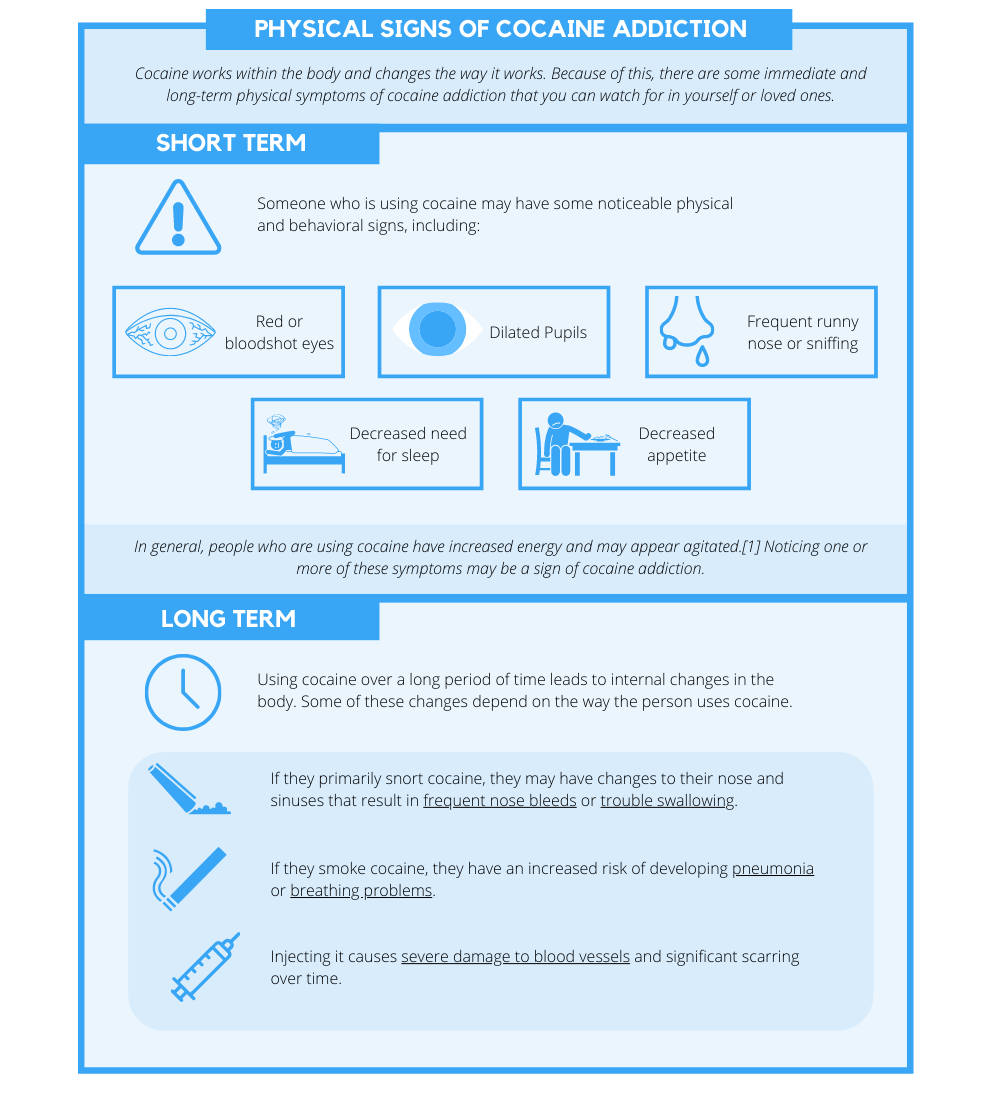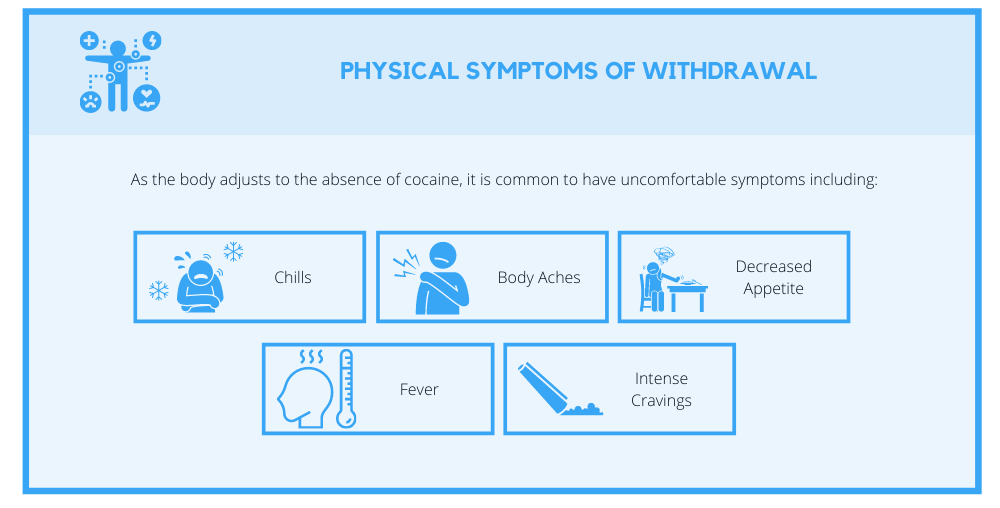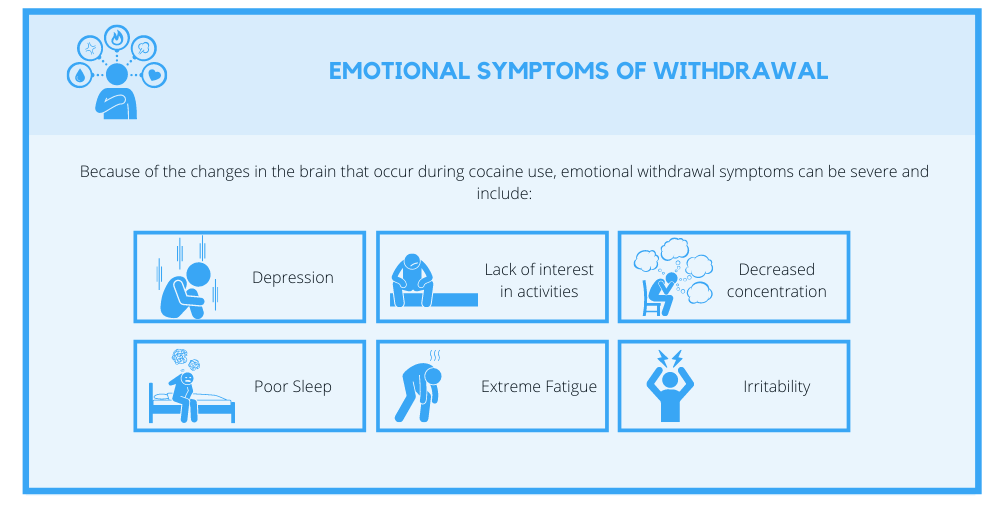Many people use cocaine recreationally to feel high. Cocaine works within the pleasure centers of the brain, meaning that users experience intense pleasure and energy. This feeling is a result of a flood of dopamine in the brain that occurs during use. Because cocaine affects the level of dopamine in the brain, it is highly addictive. Using cocaine just once can change the way the brain functions. People often require treatment to overcome cocaine addiction and support to learn how to manage their life without using.
Cocaine dependence affects every aspect of a person’s life. It hurts people’s physical health, can cause or worsen mental health issues, often leads to financial hardship, and wreaks havoc on relationships. The first step in getting help for any addiction is realizing that there is a problem. There are four important signs of cocaine addiction that can help you identify cocaine addiction and take steps to address it.
1. Physical Signs of Cocaine Addiction

Cocaine works within the body and changes the way it works. Because of this, there are some immediate and long-term physical symptoms of cocaine addiction that you can watch for in yourself or loved ones.
Short term
Someone who is using cocaine may have some noticeable physical and behavioral signs, including:
- Red or bloodshot eyes
- Dilated pupils
- Frequent runny nose or sniffing
- Decreased need for sleep
- Decreased appetite
In general, people who are using cocaine have increased energy and may appear agitated.[1] Noticing one or more of these symptoms may be a sign of cocaine addiction.
Long term
Using cocaine over a long period of time leads to internal changes in the body. Some of these changes depend on the way the person uses cocaine. If they primarily snort cocaine, they may have changes to their nose and sinuses that result in frequent nose bleeds or trouble swallowing. If they smoke cocaine, they have an increased risk of developing pneumonia or breathing problems. Injecting it causes severe damage to blood vessels and significant scarring over time.[2]
2. Tolerance as a Sign of Cocaine Addiction
Tolerance means requiring more of the drug to get the same effects. This can occur over time with addictive substances and can be a sign of addiction. After a period of regular cocaine use, people may discover that they need more and significantly more of it to get high. Cocaine use affects the body in a variety of ways that can lead to tolerance.
Metabolic tolerance
Cocaine use can cause liver enzymes to change, resulting in quicker metabolism of the drug. The period of feeling high is shortened and the person needs to take a greater amount or increase how often they use it.
Physiological tolerance
Cocaine use changes the brain and affects the way it produces dopamine. This can lead to the person needing more cocaine to feel high. This is another sign of cocaine addiction.
3. Social and Emotional Changes
Cocaine use affects both the body and the mind. Someone who uses cocaine may have behavioral and personality changes. It can cause emotional changes or worsen existing mental health problems. Some of these changes include:

- Irritability
- Depression
- Anxiety
- Mania
- Delusional thinking
Social changes can occur, too. You may notice significant changes in someone’s behavior, including:

- Secretive behavior
- Aggression
- Abusive behavior
- Missed work or school
- Falling behind on bills or other responsibilities
When people are using cocaine, they may push loved ones away or isolate themselves. They may start to spend time only with other people who are using drugs. In general, people may do things that seem out of character or unusual. These can be signs of an addiction.
4. Withdrawal Symptoms in Cocaine Addiction
Experiencing unpleasant or dangerous symptoms when you cut back or stop using cocaine can be a clear sign of addiction. This is called withdrawal. Because cocaine has such a profound effect on the body, withdrawal can be very difficult. People often need medical support when they stop using cocaine to avoid severe discomfort and relapse.
Physical symptoms of withdrawal

As the body adjusts to the absence of cocaine, it is common to have uncomfortable symptoms including:[3]
- Chills
- Body aches
- Decreased appetite
- Fever
- Intense cravings
Avoiding relapse and staying comfortable during withdrawal requires medical and professional support. Getting treatment for cocaine addiction is the best way to work towards long-term recovery and lifelong sobriety.
Emotional symptoms of withdrawal

Because of the changes in the brain that occur during cocaine use, emotional withdrawal symptoms can be severe and include:
- Depression
- Lack of interest in activities
- Decreased concentration
- Poor sleep
- Extreme fatigue
- Irritability
People who quit using cocaine are at an increased risk of severe depression and suicide. It is important that people get professional support to manage the emotional symptoms of withdrawal from cocaine. People also need to learn good coping skills to help them manage their life without using drugs.
Learn More About Treatment for Cocaine Addiction at Comprehensive Wellness Centers
If you or a loved one are exhibiting signs of addiction to cocaine or other substances, you do not have to manage it alone. Please reach out to the staff at Comprehensive Wellness Centers. We work with people to empower them to overcome their addiction and work towards lifelong recovery. If you are ready to take the first step, we will walk the rest of the way with you. Call us today to get started.
References:











